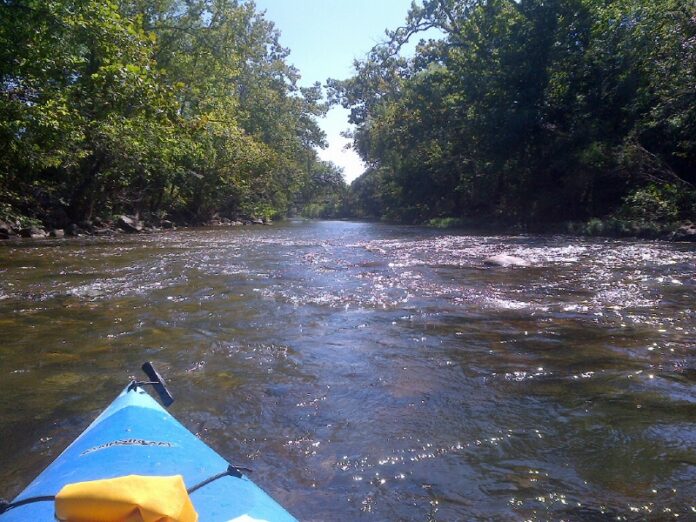 There’s a push underway, in its early stages, to promote the Roanoke River as a “blueway,” much as they have done successfully with the James River. There’s a kayak/canoe launch on South Jefferson Street in addition to one in Salem and more are planned. There’s also a launch site on Tinker Creek in Salem. Kayaks and other means of floating down local rivers can be rented in several places, including at Roanoke Mountain Adventures, located in Wasena at the River House building.
There’s a push underway, in its early stages, to promote the Roanoke River as a “blueway,” much as they have done successfully with the James River. There’s a kayak/canoe launch on South Jefferson Street in addition to one in Salem and more are planned. There’s also a launch site on Tinker Creek in Salem. Kayaks and other means of floating down local rivers can be rented in several places, including at Roanoke Mountain Adventures, located in Wasena at the River House building.
James Revercomb, the operator of Roanoke Mountain Adventures, wants people floating or paddling down the Roanoke River to be safe – especially after periods of heavy rain, when the water level rises and starts flowing more rapidly. For much of the year there isn’t all that much water in the river, especially as summer approaches, so some want to take advantage of the higher water level. But that also means rapids boaters may not be used to, especially novices.
After one bout of heavy spring rain in May, swift water rescue teams from Roanoke County and Salem had to pluck a stranded boater from a small island in the Roanoke River after his kayak capsized in the turbulence; two fellow kayakers had made it back to shore safely after their boats capsized as well.
“It all depends on your experience level,” said Revercomb, “there’s plenty of whitewater when rivers and creeks are high. For your average person any time we get a heavy rain and you don’t have much on-water experience – you’re just a recreational kayaker – it’s really not a good idea to venture out.”
For one thing, said Revercomb, right after a heavy rain rivers are often still on the rise and debris may accumulate that is also a hazard to boaters. “It’s very easy to get separated from your boat,” after being capsized, he noted.
Roanoke Mountain Adventures roanokemountainadventures.com rents kayaks and also leads some guided trips down the Roanoke River from its Wasena location. Some novices may want to try a guided float first for safety reasons. Revercomb said that waves, recirculating hydraulics and all sorts of currents, that many are not used to on the normally placid river, can make a peaceful float a far more hazardous proposition. While his company does go over some water safety basics on the floats they lead, “none of that is going to give people the tools to go out and paddle when the river is really high. That comes with years of experience.”
There’s also a difference, noted Revercomb, between the recreational sit-on-top kayak versus the whitewater kayak where the paddler slips into a hole in the center of the boat. Those are the kayaks where the user practices rolling up and out of the water – helpful when capsizing after tackling rapids.
Look for resources on line like the Upper James River Water Trail upperjamesriverwatertrail.com, or contact outfitters like Roanoke Mountain Adventures (540-525-8295) for more information on water levels on any particular day. The USGS website waterdata.usgs.gov/nwis/rt monitors the water level of just about every river that flows all year, said Revercomb. Some may feel comfortable when a particular waterway shows four feet in depth – but they may decide to stay home when it hits seven after heavy rains.
“Use your common sense – when the water is a lot higher than normal and up out of its banks it’s probably not a good idea to get out there,” warned Revercomb, “you always want to paddle when the river is on its way back down.”
By Gene Marrano


